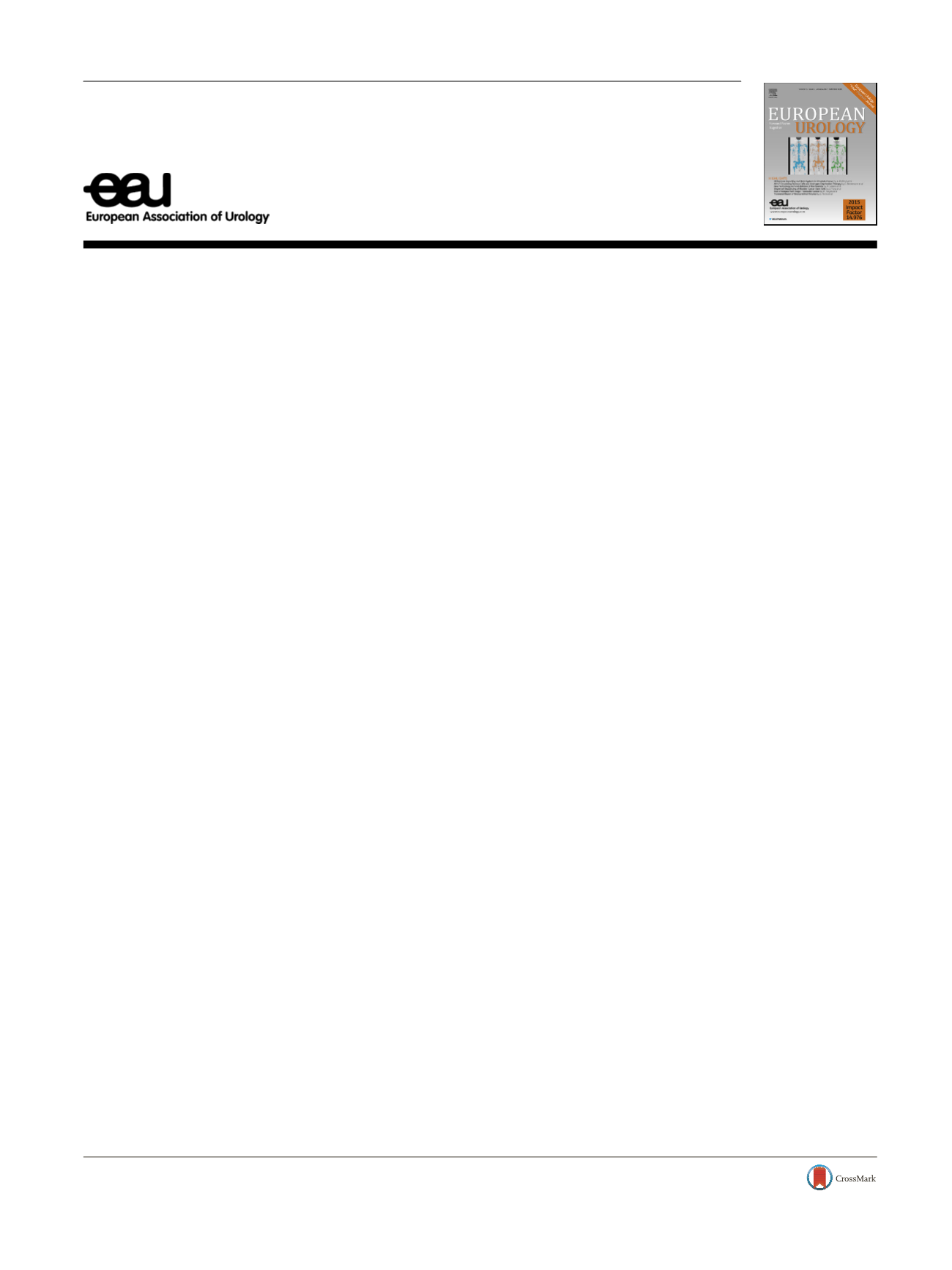

Letter to the Editor
Re:
[1_TD$DIFF]
Amar U. Kishan, Talha Shaikh, Pin-Chieh Wang, et al.
Clinical Outcomes for Patients with Gleason Score 9–10
Prostate Adenocarcinoma Treated With Radiotherapy
or Radical Prostatectomy: A Multi-institutional
Comparative Analysis. Eur Urol 2017;71:766–73
Kishan et al
[1]
performed a retrospective analysis
comparing patients with biopsy Gleason score 9–10
who were treated with either radical prostatectomy
(RP), external-beam radiotherapy (EBRT), or EBRT plus
brachytherapy (BT). From their analysis they conclude
that treatment with EBRT + BT substantially outperforms
EBRT (hazard ratio [HR] 0.30, 95% confidence interval [CI]
0.12–0.72) and RP (HR 0.23, 95% CI 0.09–0.60) in
controlling systemic progression. Although interesting,
this conclusion should be interpreted with caution, as we
suspect important bias in their retrospective observa-
tional study.
A first major concern is the drastic differences in
other-cause mortality rates between treatment groups.
On the basis of the PCa-specific mortality and overall
survival rates at 10-yr follow-up (Table 3 in
[1]
), we
deduced that other-cause mortality differed significantly
between patients undergoing EBRT + BT (28.9%), EBRT
(15.2%), and RP (6.4%). These differences are a reflection
of a patient selection bias and we hypothesize that
patients who had a higher comorbidity profile were
selected for EBRT + BT or EBRT rather than RP. This could
have a led to a perceived lower risk of death from PCa
because of a higher risk of death from other (competing)
causes in the EBRT + BT group. The authors used a Fine
and Gray regression model to correct for this. However,
although this method incorporates competing risks, it is
not able to correct for such a significant bias. The survival
benefit seen in the EBRT + BT group could therefore be
related to a patient selection bias. Therefore, a more
appropriate methodology would be based on a cause-
specific hazard analysis for the development of distant
metastases corrected for patient comorbidities. Although
the authors state that a uniform comorbidity index was
not available, this does not justify the appropriateness of
alternative analyses.
Furthermore, we must be cautious in interpreting distant
progression as an endpoint when comparing different
treatment modalities. This is especially true when compar-
ing radiotherapy with surgical treatment because of the use
of adjuvant androgen deprivation therapy (ADT; 86.2% for
EBRT, 93.3% for EBRT + BT, and 10.6% for RP). Studer et al
[2]
showed that in patients not undergoing active treatment,
[2_TD$DIFF]
immediate versus
[3_TD$DIFF]
deferred ADT resulted in a delay in
progression but did not change PCa-specific mortality.
Furthermore, D’Amico et al
[3]also showed that in patients
receiving
>
6 mo of ADT, testosterone recovery took longer
than 2 yr in 50% of cases. Thus, besides the effect of ADT on
postponing the occurrence of metastases, the persistent
testosterone suppression after adjuvant ADT might have
influenced prostate-specific antigen levels and therefore
clinical decision-making, such as when to perform imaging.
As a result, metastases might be detected later in patients
treated with adjuvant ADT. Owing to the short median
follow-up of 4.6 yr, this could have introduced an important
bias in the detection of metastases, which could explain the
authors’ observations.
Because of these limitations, no conclusions can be
drawn regarding the efficacy of different treatment
modalities in patients with a biopsy Gleason score of 9–
10. Only a direct head-to-head comparison would be able to
answer this question.
Conflicts of interest:
The authors have nothing to disclose.
Acknowledgments:
Thomas Van den Broeck is supported by a PhD
Fellowship from the Research Foundation of Flanders.
References
[1]
Kishan AU, Shaikh T, Wang P-C, et al. Clinical outcomes for patients with Gleason score 9-10 prostate adenocarcinoma treated with radiotherapy or radical prostatectomy: a multi-institutional com- parative analysis. Eur Urol 2017;71:766–73.
[2]
Studer UE, Whelan P, Wimpissinger F, et al. Differences in time to disease progression do not predict for cancer-specific survival in patients receiving immediate or deferred androgen-deprivation therapy for prostate cancer: final results of EORTC randomized trial 30891 with 12 years of follow-up. Eur Urol 2014;66:829–38.
[3]
D’Amico AV, Chen MH, Renshaw AA, Loffredo M, Kantoff PW. Interval to testosterone recovery after hormonal therapy for E U R O P E A N U R O L O G Y 7 2 ( 2 0 1 7 ) e 1 2 1 – e 1 2 2ava ilable at
www.sciencedirect.comjournal homepage:
www.eu ropeanurology.comDOI of original article:
http://dx.doi.org/10.1016/j.eururo.2016.06.046.
http://dx.doi.org/10.1016/j.eururo.2017.01.0180302-2838/
#
2017 European Association of Urology. Published by Elsevier B.V. All rights reserved.
















